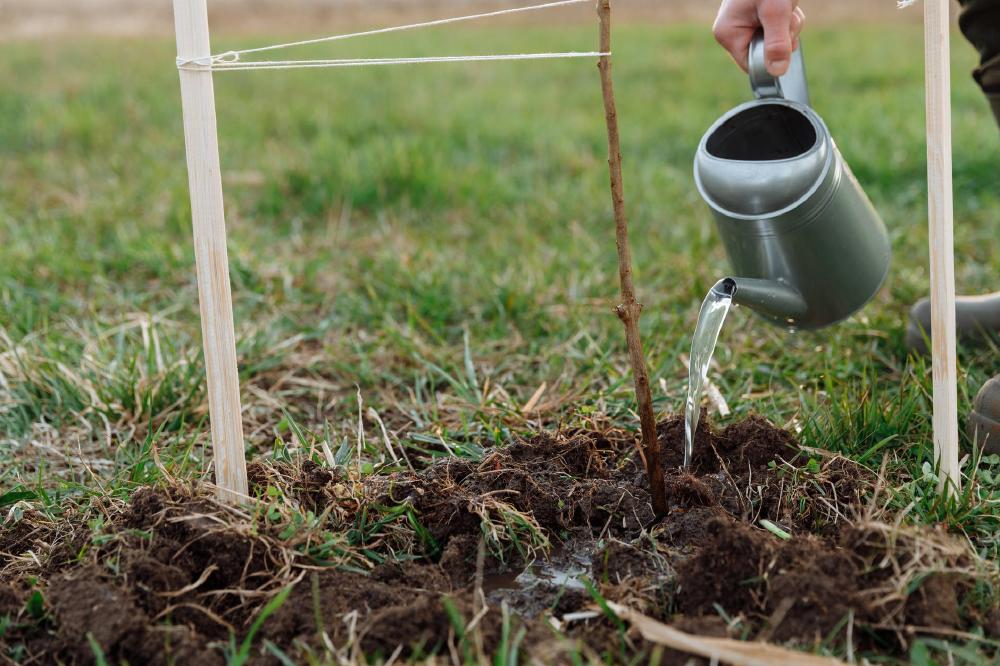
Congratulations on you getting started with composting! That's the first thing to say. Composting has become widely popular an with good reason. Some organic waste, laid down with a precise balance of greens and browns plus the right temperature and air ventilation, voila... compost is what you get as a result. Now, there are several ways of composting. In this article we invite you to read about the basics and features of outdoor composting and we'll try to guide you in which composter could better meet your needs.
Compost is the easiest, richest and I would say the most important supplement you can provide to your plants and flowers back there in your garden. Nutrient-rich humus is what you obtain -after a couple of weeks- as a result of natural organic waste decomposing. Compost is precious to your lawn or garden since it contributes to plant growth and restores balance to already depleted soil. Apart from being the best fertilizer for you garden, compost has other many benefits. Let's check on some:
Composting is a free and easy way to drastically reduce - as much as 30% - the amount of household waste that usually goes to the garbage can. In other words, just by choosing composting you are already helping the planet a lot! Imagine if every living person in the planet did it, we would be preventing tons of organic waste from ending up in landfills.
In order for a landfill to exist, wild spaces are taken over by humans to drop our waste. Most of the landfills in North America are either filling up at an incredible rapid rate or are already shut down. What's more, a third of all that waste comes from household waste.
Organic waste doesn't properly break down in a landfill, and as a result a very harmful gas - called methane gas- is created. Methane gas has a direct impact on the rise of the rate of global warming and climate change. So by composting you are reducing your carbon footprint and at the same time helping wild spaces against becoming depositories of human waste.
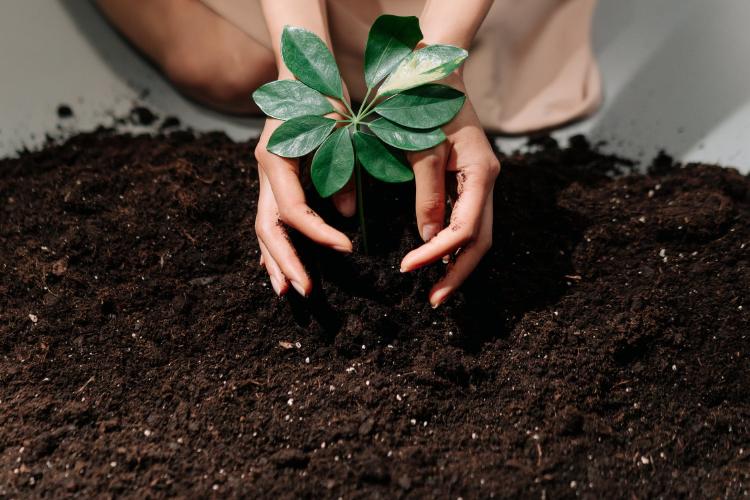
Composting allows many living microorganisms to thrive during the process. The introduction of these living organisms to the soil is major since they contribute to better oxygenate the soil, breaking down into the perfect fresh, black soil your plants and flowers need!
Okay, now that you've decided to compost you maybe wondering... Where should I start my batch? Ideally, and if you have enough space, a compost may work better outdoors especially to keep odors and possible uninvited visitors - such as flies- away. Starting your compost outodoors will also favor an optimum ventilation.
If you live in an apartment or your place is not very big and you still want to compost, by all means you can do it, but we'll be focusing here on the advantages of composting outdoors and how you can do it.
Related article: 13 Reasons You Need to Know to Choose Where to Put a Compost Bin
It is true that having our bins as close as possible it's super practical! but it is not recommended that you keep your bin so cose to the kitchen. Why? The thing is that when your compost ratio is off - compost ratio refers to the right balance between green and browns, basically- you may have some problems. When organic easte doesn't decompose correctly, bad smell comes and iyou won't wnat that smell in your house, beleive me.
Actually, when your compost is not break down properly, the organic material within your compost will start to release ammonia and this produces a really digusting putrid smell. So if you want to keeo odors and flies away, place your bin at a reasonable distance from you kitchen. What gardeners usually recommend is a spot in btween the bin and the kitchen so that it's considerably far from the house but at the same time is easay to acess and drop your waste into.
You may be interested on: How to choose the best Compost bin for your kitchen
A balanced compost ratio requires as well tha right temperature and air ventilation. By placing your bin outdoors, you already have and advantage over this. But watch out! Do not expose your compost bin to direct sunlight, otherwise it will become too hot and will dry up.
A dry compost is a surely a one that wil go wrong because moisture is essential fro the correct decomposition of materials. Water provides the compost with oxygen, which is also crucial to a successful process. So where do you place you bin, then? Ideally, a shady spot in your garden should work. That is, find a spot with partial shade in your garden: your compost will rise its temperature but not excessively, which allows moisture to stay in the mixture. An extra tip! Stir your compost regularly so that temperature and moisture reach every element in it.
Take a look to the following article: Complete Guide on How to Keep a Compost Pile Hot, & it's Benefits
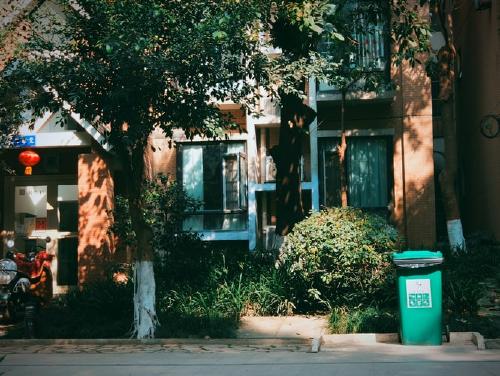
This may sound obvious but it may be not. When picking he spot for your outdoor bin or batch, try to keep it accessible for when the compost is done. How so? Whether you are just composting small or big amounts of compost, remember that the resulting mass will be heavy and fresh. As our main objective is fertilizing our garden with what we composted, the best location for your compost bin is close to your flowers and plants. It's key that you are able to easily grab and scatter your compost over your plants! Make sure then that you don't place your bin too far!
👉 At the following article you have all the information you need to choose the perfect bin or tumbler for you: Compost Tumbler vs Bin: Find Out the Pros and Cons
Now that you have chosen the perfect spot in your yard for you compost bin, you may be wondering... what's the best composter that I can get? Well, maybe we should change this question to what is the composter that will work best for you? You can base you choice in basically these criteria:
This means that If you’re willing and ready to turn your compost weekly or every two weeks, you might consider enclosed bins or open compost piles. If you have some outdoor space available, this will favor your compost a lot because of the carbon rich materials -or browns- that you already have available: fallen leaves, wood sticks, etc.
If you live in a city or bigger town and you do not have enough space in your place for turning your compost regularly, compost tumblers or vermicomposters are worth considering.
The "biggest" issue with producing compost is having the chance to turn and stir the mixture upside down from time to time, so that the decomposition process goes well. But with the "no turning" methods, your compost can be correctly ventilated with no turning at all!
The key to succeeding in this way of composting is layering your organic waste properly in the first place and a regular thorough stir. You won't believe it, but your compost will be ready sooner rather than later, even faster than if you were turning it manually. Nitrogen levels might be be even higher than with traditional turned compost.
This "no turn" style fo composting will let you add new materials to the top of the pile, and pick fresh, rich compost from the bottom of the container.
For more info, check this: When should I turn my compost pile? All you need to know about it
If you are thinking about handling small amounts of compost, enclosed bins may be the best choice. These include:
As sustainable warriors ourselves, we always try to encourage DIY options! The cheapest way to have your own bin is to build it yourself out of a heavy-duty garbage can. Add some holes for a good air ventilation and there you go! All what is left is to drop your greens and browns directly to the bin and wait patiently for the process to go through.
You are going to need a lid, too. And a very secure one so that the bin can be laid and rolled for a better stir up. Make sure your lid is safe or otherwise you won't get the expected results.
Another alternative if it's hard for you to get a good can is to build it with pallets! Yes, pallets always come handy, and composting is not the exception to the rule.
Related article: DIY! 5 Simple Steps to Build your own Compost Bin from Pallets.
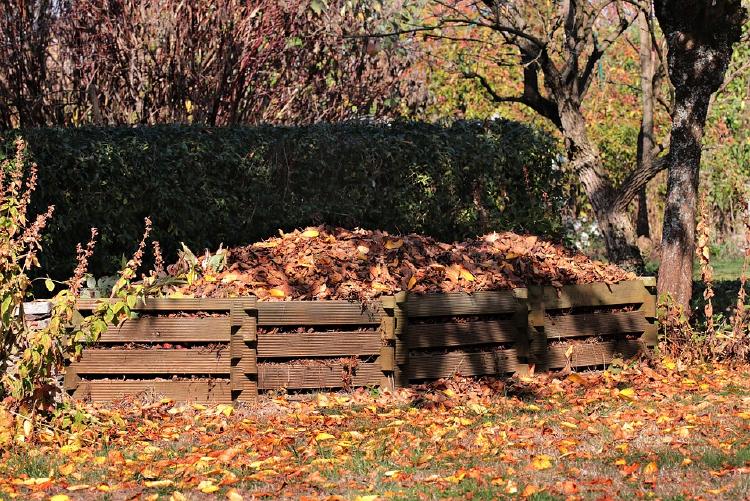
If you are not very good at building stuff, don't worry because there are alternatives which are pretty affordable, too. A compost bin or ‘compost digester can be a a great choice for handling just the regular household waste.
The great advantage of these bins is that they come ready to be settled: they are generally closed on the sides and top, and open on the bottom so they can be laid directly into the ground. These bins are great for places in residential areas where you'll need something relatively small but yet secured enough to keep odors and pests away.
They are mostly inexpensive too but they do have a disadvantage: it is difficult to turn the compost, so the composting process will take a considerable amount of months before it turns into rich soil. Another thing worth mentioning about these standard bins is that they are not usually prepared for very cold weather since they are made of plastic and can break easily.
What this type of digesters usually do is to smash and dry out the organic material that is within but technically, they do not break the organic waste down. That's the reason why everything happens in a couple of hours but the good thing is that you can have a rich fertilizer for your plants right away!
If you are opting out for this method, we recommend burying the resulting material under the soil surface so that the "real" decomposition can take place, which will greatly benefit your plants and flowers, for sure!
Undoubtedly, this is a very efficient way of proceeding with your compost. Compost tumblers can keep relatively high temperatures within the drums. This is very important for your compost because it will provide the right amount of moisture and thus, microbes that will oxygenate the mixture so tha everything goes well.
The greatest advantage of compost tumblers is that they provide the perfect aeration. Some tumblers come with an interior “paddle", which greatly contributes to bring air into the mixture and prevent clumping from happening. If your compost is too soggy, remember that it will probably end up too packed and poorly ventilated. Differently design compost tumblers have holes that will ease aeration. We'll say it again: a good amount of moisture and oxygen are crucial for good results!
Related article: Compost Tumbler vs Bin: Find Out the Pros and Cons
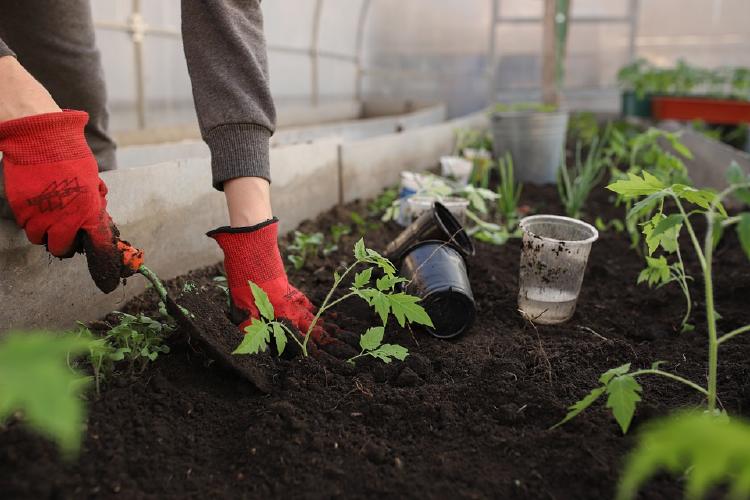
Well, this has been a pretty complete introduction to the world of outdoor composting. We hope we provided you with some practical and straightforward information about outdoor compost and the best way to approach it based on where you live, what you'll be composting and the method that best suits your demands.
Thanks again for getting started with composting. You are a true sustainable warrior... spread the word and keep the practice so that we can be more and more people out there helping the planet, every singe day. See you around!